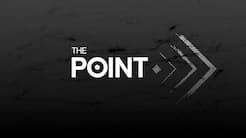More than 150 Indigenous eye care workers have renewed called for improvements in eye health during a conference at Melbourne’s University on Thursday.
Hosted by Indigenous Eye Health (IEH), a unit established by Professor Hugh Taylor at the University of Melbourne, IEH has been assessing the need, barriers and enablers to eye health services for Aboriginal and Torres Strait Islander people.
In 2008, a national survey conducted for eye health in Aboriginal and Torres Strait Islander people across the nation showed worrying statistics. But Professor Taylor said there has been ‘real progress’ since 2008.
“While Aboriginal children had much better vision than non-Indigenous kids, by the time they reached the age of 14 and above there was three times as much vision loss, and six times as much blindness compared the rest of the country,” he told NITV News.
In 2016, data revealed the gap on Indigenous vision had halved, from six times to three times.
“We’re making real progress, but 3 times is still not acceptable and [there is] still a lot more work that needs to be done,” Professor Taylor said.
Although Indigenous children are born with good eyesight, their eye health deteriorates as they grow up due to a number of factors, such as lack of eye care, diabetes, the simple need for a pair of glasses or cataracts needing surgery.
“The kids’ vision is okay until they reach the ages of 30, 40 or 50 when they start to have these other eye diseases developing," Professor Taylor explained.
The Roadmap for Close the Gap for Vision was launched in 2012 and is now active in 41 regions, covering more than two-thirds of the country’s Indigenous population.
Roadmap successes include increased cataract surgery funding, optometry and ophthalmology visits, new Medicare listings supporting eye care screening, health promotion, regional and jurisdictional oversight and new diabetic retinopathy cameras and training.


